A Kölsch Komparison—Two Takes on a Classic Style
There are a few styles of beer that I think of as brewers’ beers. They might not be the most popular with beer drinkers—or at least the typical American craft beer drinker—but they’re go-tos for deep-in-the-funnel beer nerds, homebrewers, and industry pros. Saison is one. German pilsner is another. And so is its kissing cousin: kölsch.
Light, refreshing, and well-balanced, it’s a quintessentially beer-flavored beer.
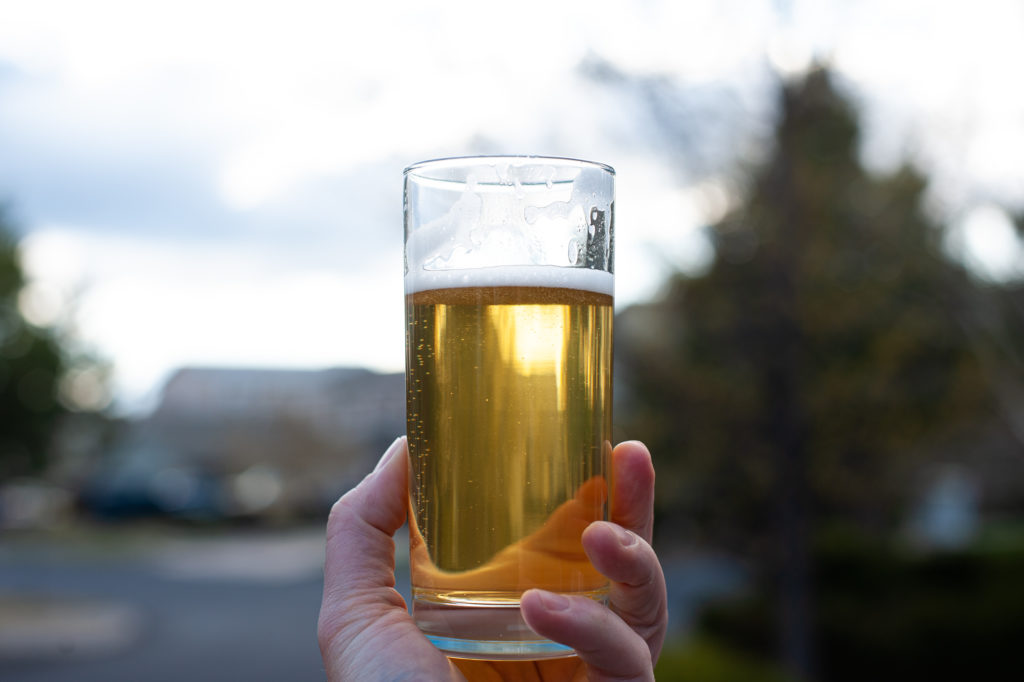
If you’re an American, there’s a pretty good chance you’ve never had a German-made kölsch. And even if you have, it’s likely it was old and stale by the time you got your hands on it. (A 6-pack of Früh I picked up recently sure was.) Sure, lots of American craft breweries make kölsch, too, but while I’ve enjoyed many of them, the majority of those I’ve tried simply don’t match up to the ones I tried in Cologne when I visited back in 2014. I was a relative novice in the beer world back then, but I knew I was extremely lucky to get sent to kölsch country for work, and I made the most of it, visiting taprooms backed by all the local breweries.
As douchey as it may sound, drinking kölsch in Cologne kinda ruined it for me. (See also: Pizza in Italy and bánh mì in Vietnam.) And perhaps in part because of my negative experiences with American-made kölsch, I never really tried to replicate it myself, either.
But a few months ago I spotted a post on the BeerAdvocate forums from a homebrewer turned pro, in which he detailed his exhaustive process for developing his brewery’s kölsch recipe.
It sounded amazing—and more importantly, it sounded doable on my system—so I decided to brew it exactly as written. But I was curious whether his claims, specifically his claim that a specific brand of malt and a more obscure yeast strain made all the difference, would prove true in a side-by-side comparison. So I also brewed a second batch using the malts I already had on hand, and a much more common yeast strain. Here’s what I found.
What’s in it?
The Vitals
- Category: Kölsch (BJCP 5B)
- Method: All-grain, BIAB, full-volume mash (no sparge, much squeeze)
- Batch size: 4 gallons
- Mash: Step-mashed 20 mins @ 145F, 20 mins @ 154F, 15 mins @ 162F, 15 mins @ 168F
- Boil: 70 minutes
- Fermentation: 14 days at 62F; 30 days conditioning at 36F
- Efficiency: 92%(!)—adjust to your own system
- OG: 1.054
- FG: 1.008
- ABV: 6%
- IBU: 23
The Grain
- 5.5 lbs. IREKS Pilsner or 5.5 lbs. Best Malz Heidelberg Pilsner (86.3%)
- 14 oz. IREKS Vienna or 14 oz. Weyermann Vienna (13.7%)
The Hops
- 36g Hallertau Mittelfrüh [3.6% AA] @ 70 minutes (19.3 IBU)
- 10g Tettnang [3.9% AA] @ 20 minutes (3.4 IBU)
The Rest
- Yeast: 1.5L starter of East Coast Yeast Kölschbier (ECY21) or Omega Kölsch II (OYL-044)
- Water: 5 gallons Bend tap + 2g CaCl2, 2g CaSO4, 3.3mL lactic acid 88%, and 0.2 tablets Campden
How’d it go?
Offset Bier’s kölsch uses a brand of malt I’d never seen for sale from the major American homebrew shops: IREKS (yep, capitalized, like IKEA). They’re a German maltster, but a relatively small player in the German brewing industry. From what I can tell (and please correct me if I’m wrong), instead of fighting Weyermann and Best Malz on home turf, they decided instead to focus on foreign markets in South America and Asia.
After a quick search, I found exactly one online homebrew shop in America selling IREKS: Texas Brewing Inc. So I ordered 20 pounds of their pilsen malt, plus some Munich and Vienna, just to give it a whirl. (Great service, quick shipping, highly recommended!)
As for yeast, Offset’s brewer said that after many trials, trying “every yeast under the sun,” East Coast Yeast’s ECY21 was a clear favorite—defeating far more famous strains like WLP029/WY2565. Why? Well, here’s how the brewer put it: “Really beautiful white wine like character but floccs much better than 2565.” Hard to argue with that.
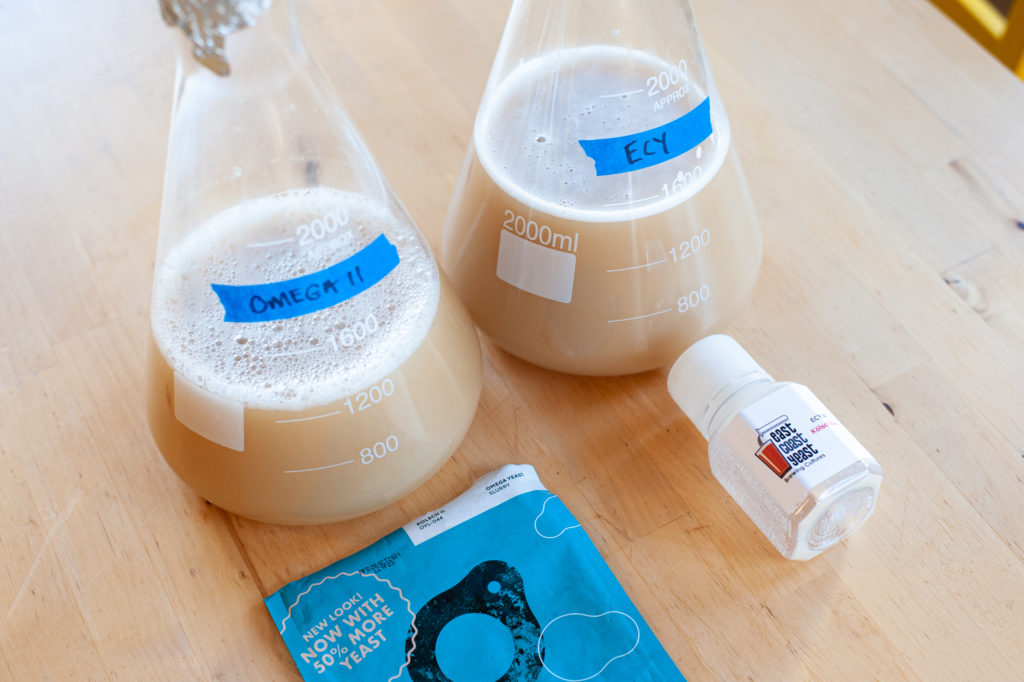
He also specified his hopping varieties and schedule. I stuck to it for both of my beers, though I swapped out the early addition to a variety I already had on hand, replacing his Perle with Hallertau Mittelfrüh.
So that was one recipe down—let’s call it the control. But how would my thrown-together experiment compare? Well, I had Best Malz Heidelberg Pilsner and Weyermann Vienna on-hand, and I snagged a pack of Omega Kölsch II (allegedly the same strain as WLP029 and WY2565) when I placed my order with Texas Brewing.
And with all that settled, all that was left was to brew. I brewed these batches on successive days, so I could ferment them both in my ferm chamber, which can accommodate up to two kegs. The brew days were unremarkable; I followed the pro’s mash schedule, which involved four rests at 145, 154, 162, and 168 degrees Fahrenheit, and chilled the wort to around 65F before transferring it to a fermentation keg, pitching in my yeast starter, and putting it in the chamber (set to 62F).
Both batches came in well over the expected OG—the Offset-inspired batch was one point higher at 1.054 to the ad hoc batch’s 1.053. (I’d been aiming for 1.046.) Kölsch typically tips the scales at around 4.7% ABV, and the OG is rarely over 1.050, so this was slightly concerning, but I let it ride anyway. Fermentation was relatively brisk, finishing for both beers in about five days. Both batches came in at a FG of 1.008, which put them at an even 6% for the Offset version and 5.9% for the ad hoc.
Is imperial kölsch a thing? I guess it is now.
Anyway, I left them to clean up for a few more days before kegging and letting them condition for several weeks at keezer temps.
How’s it taste?
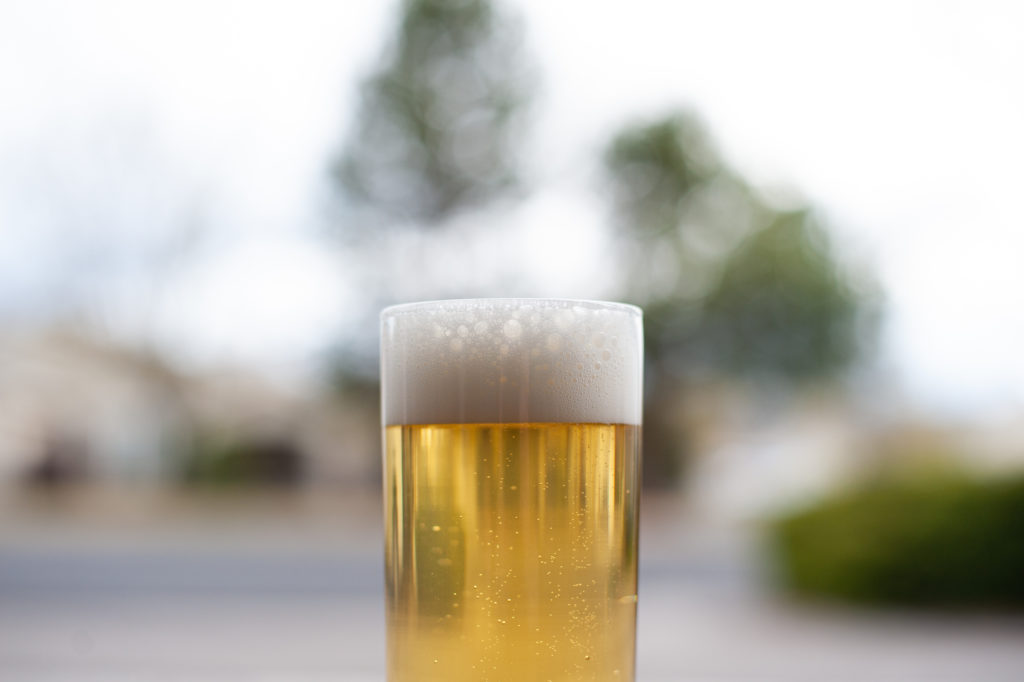
Version 1: Offset-Inspired
Appearance: As is typical with kölsch, this beer took forever to drop clear—like over a month—but once it did, it was super bright. This one actually took longer than the ad hoc batch, which I’m putting mainly on the IREKS malt. Why not the yeast? Because I used the cake from this batch to make an altbier and that beer dropped clear within a week of cold conditioning. The color is liquid gold, with a tall head that hangs around for a while before leaving generous lacing on the glass. Beautifully beery beer, in other words.
Aroma: Compared to the ad hoc batch, this one was much more lager-like, with a hint of sulfur on the nose and a generally clean, malt-forward bouquet. The herbal/grassy German hops played support in the background, but for the most part the nose was crackery malt. No alcohol was apparent, despite the higher than average ABV.
Taste: Followed the nose: ultra-clean, lager-like, and malt-forward. Actually, it was really well-balanced. Since it finished relatively dry, that maltiness didn’t become heavy, even after a stange or two. And despite the relatively high ABV, it was a very crushable spring beer. My only complaint is that the lager-like character made it feel a bit anonymous—not quite lager, not quite traditional kölsch as I know it. I wonder if fermenting a bit warmer would bring out more esters from the ECY21 yeast.
Mouthfeel: As implied above, well-balanced and very drinkable, despite the malt-forward flavor profile and relatively low ABV. I could (and did) drink a ton of it.
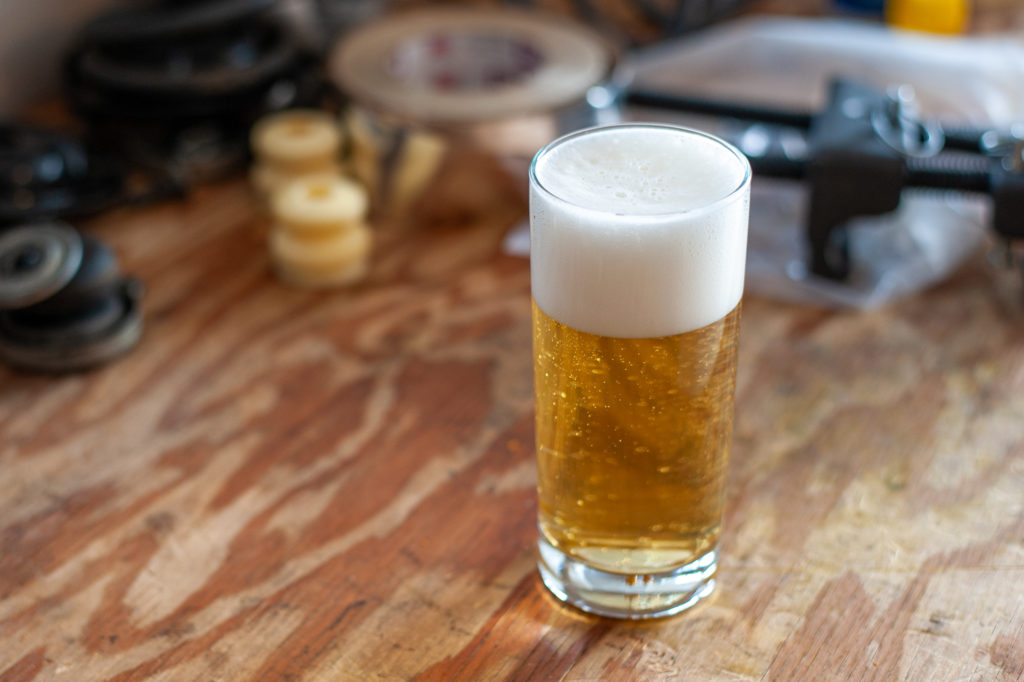
Version 2: Ad Hoc
Appearance: Like its sibling, this beer took a while to clear up, though it got there a little quicker. Since I used the same malt ratios, the color was nearly identical, as well. This batch had slightly worse head retention—perhaps because the Best and Weyermann malts are less protein-heavy than the IREKS—but it was still a very pretty beer.
Aroma: This batch was considerably more yeast-driven than the Offset batch, with some bubblegum esters and a generally fruitier nose. The malt still surged ahead of the hops here, but it was frankly dominated by the yeast expression. No alcohol aroma here, either.
Taste: The fruity nose translated into a similarly fruity flavor, though the bubblegum (and a little banana) was less apparent on the palate. In its place was a vaguely fruit salad-y overtone. This batch also presented as slightly sweeter than the Offset batch, but since they had the same FG, I’m putting that down to the yeast character. (Could also be the Heidelberg pilsner, actually.) Overall, I didn’t hate it at all—this keg disappeared quickly—but it was less crushable to me than the Offset batch. While I thought that one was too anonymous, this one came across as too aggressive. In the future, I’m going to try to find that middle ground.
Mouthfeel: Similar to the Offset batch, but slightly heavier thanks to the added apparent sweetness.
How did they compare to actual German kölsch?
This is a tricky question to answer, mostly because the packaged German examples we get in the states tend to be really, really old. Case in point: I picked up a 6-pack of Früh in bottles to compare against my attempts, and it was over a year old. Did it still taste good? Sure, it was delicious. But it had a strong honey character, along with a Grape Nuts-like maltiness, that makes me think slow, gradual oxidation.
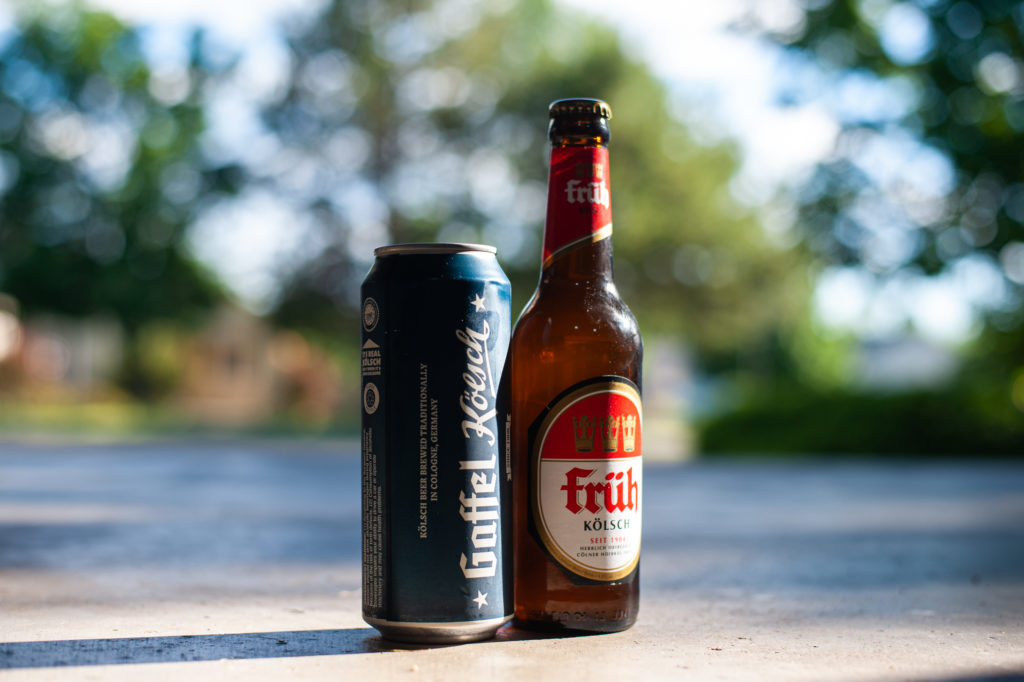
I also picked up a 4-pack of Gaffel kölsch in tallboy cans, which could theoretically provide better protection against oxidation. But these were similarly old, and who knows what temperature they had been stored at before I got my hands on them? If anything, the Gaffel had even more of that heavy Grape Nuts character than the Früh. At this point, I wasn’t sure whether that’s a fundamental characteristic of real German kölsch or just an age defect. I certainly didn’t remember that flavor from my time drinking in Cologne, but a) I wasn’t taking notes back then, and b) I was drunk.
As a last resort, I decided to head over to Prost!—an all-German beer bar and restaurant here in Bend—since they had a keg of Reissdorf on. Now this was more like it. The draft example had less of that heavy honeyed malt character and a brighter balance between malt and hops. Was this just Reissdorf tasting different than Früh and Gaffel, or was it simply fresher beer? It’s basically impossible for me to know without going back to Germany, but without a doubt it tasted closer to my beers than any other kölsch I’d tried.
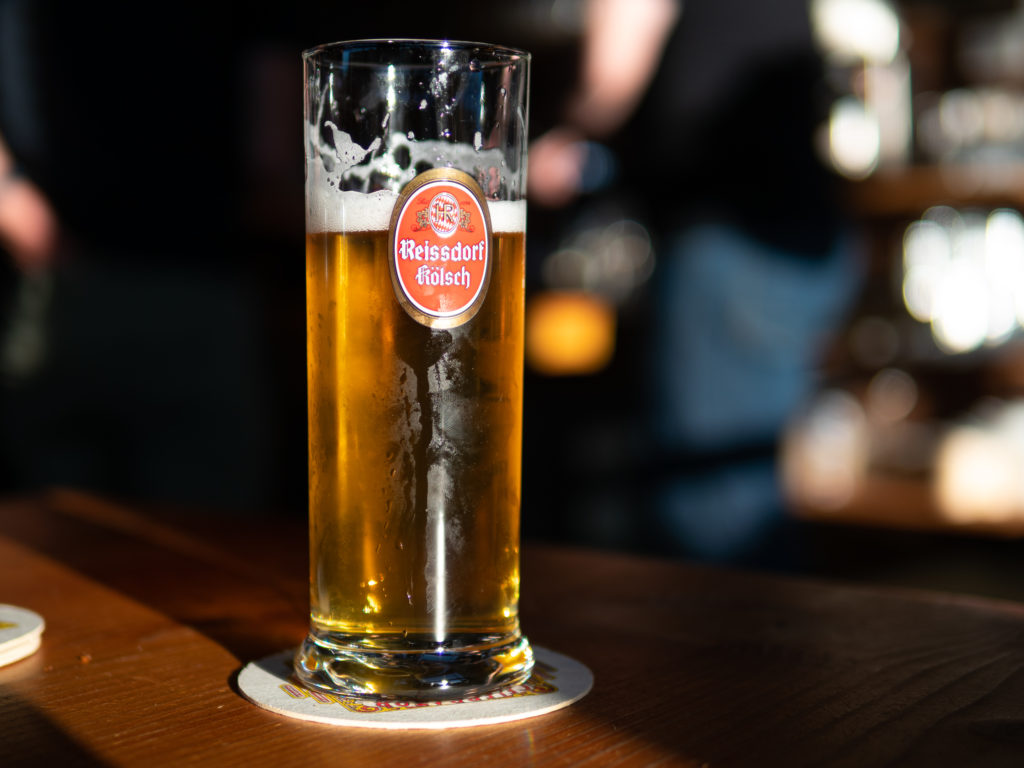
Then, as these kegs got close to kicking, I volunteered as a steward for the Best of Craft Beer Awards. And who should show up as a judge but the other brewer from Offset and his partner, who was also stewarding. Over the course of the event, I got to know them a little, and was finally able to taste the Offset kölsch that I’d only read about.
It was good! And quite a lot closer to my own beer than I expected, at least based on my interactions with German examples. Offset’s kölsch was maltier than mine overall, but similarly balanced and bright in comparison to the honeyed, heavier imported examples (Reissdorf excepted).
How would I change it next time?
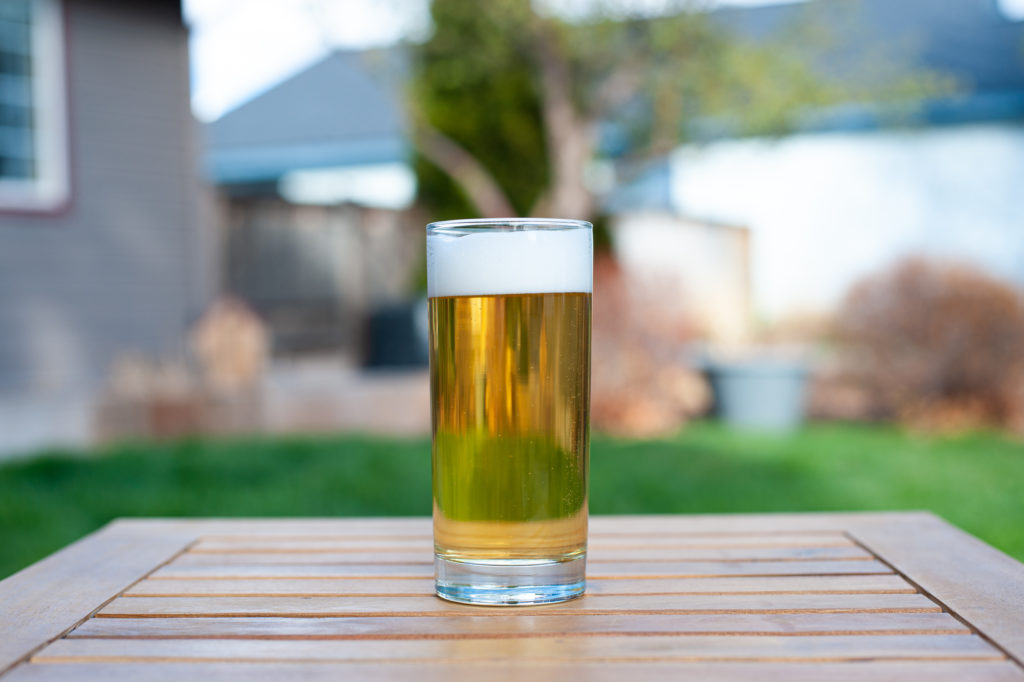
While I didn’t love the outrageously malty, age-affected profile of the imported German kölsches I tasted, mine clearly needed a little more oomph in the malt department. So, aside from adjusting the grist for a more traditional OG and ABV, I’d probably add a dash of melanoidin, and perhaps a little wheat for added head retention. Since I’m not sure what Offset’s step mash regimen contributes, given we’re using fully modified malt, I’d probably also simplify it to a 60-minute rest at 150F. As for the yeast, I think I’d stick with Omega Kölsch II/WLP029/WY2565, since they provide more of the classic kölsch aroma and flavor I expect in the style, but ferment closer to 60F to keep those esters from overwhelming the beer.

Great breakdown of your process and ingredients. I’m taking dry January to brew and condition this beer, and will use your mash/grist tweak recommendations to see if I get closer to the flavor mark that we both probably are looking for in this beer. I’ve brewed one similar in grist to yours with WY1007 German Ale and it was awesomely crisp, but missing that special something that makes a Kolsch what it is.
Much appreciated–glad I found this, and am feeling inspired to also document my brews in the way that you have. Prost!
With appreciation from Eugene,
Nick
@hoodwinkedbrewing (IG)
Hey Nick, great to hear from you!
While I’ve been silent on the blog lately, I’ve still been brewing (aside from a recent three-month hiatus to move and get re-settled in New Mexico). In the interim, since posting this, I’ve become somewhat of a LODO (low dissolved oxygen) adherent, and I think using those techniques would help add the malty oomph I want in this beer without resorting to melanoidin malt. I also think I’d keep the step mash but tweak it a bit—maybe something like ~20-40 minutes at 145 (beta), then 60 minutes at 163 (alpha), and 10 at 172 (mash out). If you’re curious, the idea with the long alpha rest is to build the dextrins needed for good head.
This is on my to do list… I’m going to try a variation of your no boil Neipa first! I don’t see a Weissen recipe and would be interested to know if you’ve done one, my one attempt so far was the worst beer Iven ever made… Im living in Franconia in Germany so we have lots of examples of….Slightly less alcoholic Neipas are my go to beers at the moment, but would love to master at least one wheat beer. Nice site, Pröst,
Eddie.
Hey Eddie, thanks for reading! I’m not a hater, per se (I like Weihenstephan’s hefe a lot), but wheat beers are easily my least favorite category overall. I haven’t made one since my 4th or 5th batch (I’m on #143 right now) and I probably won’t any time soon. Sorry about that!
Ben, curious if you’ve tweaked this since originally posting? I brew one or two Kolsch a year and have rolled with about half as much Vienna and equal Wheat, but now wondering if upping the Vienna is something to try.
Also curious if you tried to further isolate the base maltster variable – identical recipes with different yeast and see how they compare? I’ve stuck with 2565 as I find it has the best expression of that white wine character. Was that missing/muted in the ECY brew?
Hey Kevin, alas I have not gotten back to this recipe—or kolsch in general—since posting this. I’ve been neck-deep in lager and perfecting my hops game. My gut says that the grist I posted doesn’t need adjustments, just more careful oxygen-management and yeast-management practices. But I think there’s also some wiggle room for kolsch grist. Are you doing pressure fermentation/LODO at all?